Geology Reference
In-Depth Information
?
First, let us address how magma originates. We know
that the atoms in a solid are in constant motion and that,
when a solid is heated, the energy of motion exceeds the
binding forces and the solid melts. We are all familiar with
this phenomenon, and we are also aware that not all solids
melt at the same temperature. Once magma forms, it tends
to rise because it is less dense than the rock that melted, and
some actually makes it to the surface.
Magma may come from 100 to 300 km deep, but most
forms at much shallower depths in the upper mantle or lower
crust and accumulates in reservoirs known as
magma chambers
.
Beneath spreading ridges, where the crust is thin, magma
chambers exist at a depth of only a few kilometers; however,
along convergent plate boundaries, magma chambers are com-
monly a few tens of kilometers deep. The volume of a magma
chamber ranges from a few to many hundreds of cubic kilo-
meters of molten rock within the otherwise solid lithosphere.
Some simply cools and crystallizes within Earth's crust, thus
accounting for the origin of plutons, whereas some rises to the
surface and is erupted as lava fl ows or pyroclastic materials.
What Would You Do
You are a high school science teacher interested in develop-
ing experiments to show your students that (1) composi-
tion and temperature affect the viscosity of a lava fl ow, and
(2) when magma or lava cools, some minerals crystallize
before others. Describe the experiments you might devise to
illustrate these points.
amphibole. Further cooling causes a reaction between the am-
phibole and the melt, and its structure is rearranged so that the
sheet structure of biotite mica forms. Although the reactions
just described tend to convert one mineral to the next in the se-
ries, the reactions are not always complete. Olivine, for example,
might have a rim of pyroxene, indicating an incomplete reac-
tion. If magma cools rapidly enough, the early-formed minerals
do not have time to react with the melt, and thus all the ferro-
magnesian silicates in the discontinuous branch can be in one
rock. In any case, by the time biotite has crystallized, essentially
all the magnesium and iron present in the original magma have
been used up.
During the early part of the last century, N. L.
Bowen knew that minerals do not all crystal-
lize simultaneously from cooling magma, but
rather crystallize in a predictable sequence.
Based on his observations and laboratory
experiments, Bowen proposed a mecha-
nism, now called
Bowen's reaction series
,
to account for the derivation of intermediate
and felsic magmas from mafi c magma. Bow-
en's reaction series consists of two branches:
a
discontinuous branch
and a
continuous
branch
(
Calcium-rich
plagioclase
Types of
ma
g
ma
Olivine
Reaction
Mafic
(45-52
%
silica)
Pyroxene
(augite)
Figure 4.4). As the temperature of
magma decreases, minerals crystallize along
both branches simultaneously, but for conve-
nience, we will discuss them separately.
In the discontinuous branch, which
contains only ferromagnesian silicates, one
mineral changes to another over specific
temperature ranges (Figure 4.4). As the tem-
perature decreases, a temperature range is
reached in which a given mineral begins
to crystallize. A previously formed mineral
reacts with the remaining liquid magma
(the melt) so that it forms the next min-
eral in the sequence. For instance, olivine
[(Mg,Fe)
2
SiO
4
] is the first ferromagnesian
silicate to crystallize. As the magma contin-
ues to cool, it reaches the temperature range
at which pyroxene is stable; a reaction occurs
between the olivine and the remaining melt,
and pyroxene forms.
With continued cooling, a reaction takes
place between pyroxene and the melt, and
the pyroxene structure is rearranged to form
◗
Reaction
Amphibole
(hornblende)
Intermediate
(53-65
%
silica)
Reaction
Biotite
mica
Sodium-rich
plagioclase
Potassium
feldspar
Felsic
(>65%
silica)
Muscovite
mica
Quartz
◗
Figure 4.4
Bowen's Reaction Series Bowen's reaction series consists of a discon-
tinuous branch along which a succession of ferromagnesian silicates crystallize as the
magma's temperature decreases, and a continuous branch along which plagioclase
feldspars with increasing amounts of sodium crystallize. Notice also that the compo-
sition of the initial mafi c magma changes as crystallization takes place along the two
branches.























Search WWH ::

Custom Search